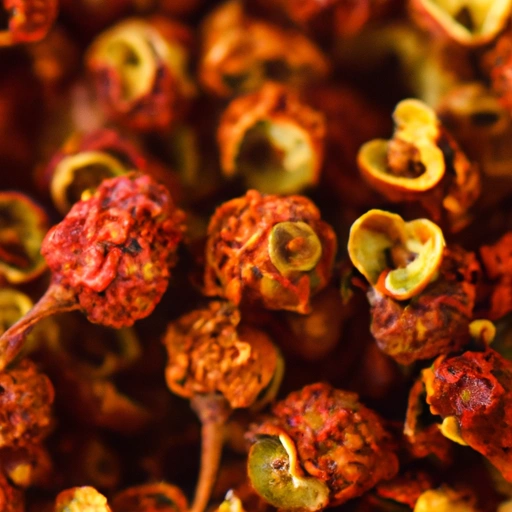Szechuan Pepper
Description

Szechuan pepper, also known as Sichuan or Chinese coriander, is a unique spice derived from a group of species in the genus Zanthoxylum. It is known for its distinct lemony flavor and the tingling, numbing sensation it imparts, which is due to the presence of hydroxy-alpha sanshool. This spice is not related to black pepper or chili peppers but belongs to the citrus family, Rutaceae, which could explain its complex citrus notes.
Common uses
While Szechuan pepper is most commonly associated with Chinese and other Asian cuisines, its usage has extended to American and European cooking. It is typically used in ground form and measured in teaspoons (tsp) or grams (g), with 1 teaspoon being equivalent to about 2 grams. For those using metric, imperial, or US customary units, the conversions are all catered for in recipes.
Nutritional value
Calories
Szechuan pepper is low in calories, with 1 teaspoon (2 grams) providing roughly 8 calories.
Protein
This spice contains trace amounts of protein, with 1 teaspoon offering approximately 0.3 grams.
Fat
The fat content in Szechuan pepper is minimal, with 1 teaspoon containing around 0.4 grams of fat.
Carbohydrates
Carbohydrates in Szechuan pepper amount to about 1.6 grams per teaspoon.
Vitamins
Szechuan pepper provides a good source of vitamins, particularly vitamin A and vitamin E.
Minerals
This spice also contains minerals such as potassium, magnesium, and iron.
Health benefits
Szechuan pepper may have several health benefits, including anti-inflammatory properties, aiding digestion, and possibly improving immune function due to its antioxidant content.
Potential risks
Consuming Szechuan pepper in moderation is generally safe. However, overconsumption can lead to mouth and stomach irritation for some individuals. It is also important to note that for a small number of people, the numbing effect can be quite intense.
Common recipes
Szechuan pepper is commonly found in recipes such as Sichuan hotpot, kung pao chicken, and mapo tofu. It is also used in spice blends like Chinese five-spice powder.
Cooking methods
It can be toasted and ground or infused into oils and broths to impart its flavor.
Pairing with other ingredients
This spice pairs well with meats, tofu, noodles, and vegetables, enhancing dishes with its complex profile.
Summary
Szechuan pepper is a versatile and flavorful ingredient that has made its way from traditional Chinese medicine cabinets and Sichuan kitchens to global culinary practices. Its unique numbing sensation and citrusy notes have won it a place in the hearts of chefs and home cooks around the world. While it carries a range of health benefits, it should be enjoyed in moderation to avoid any potential risks. Szechuan pepper can be easily incorporated into a variety of dishes, and with its rising popularity, continues to spice up recipes across continents.